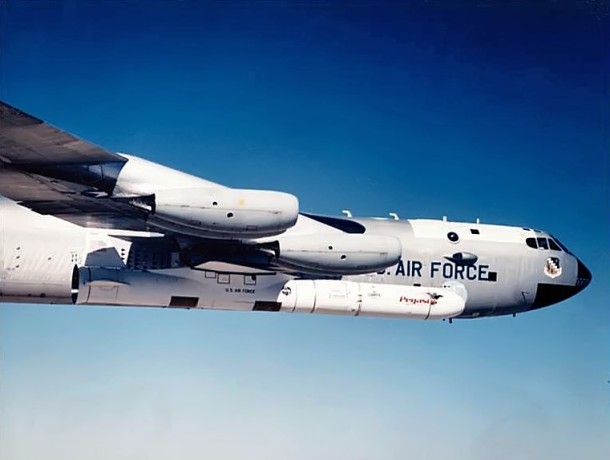
Twenty-five years ago this month, the Orbital Sciences Corporation (OSC) orbited a PegSat satellite using the then-new Pegasus 3-stage launch vehicle. This historic event marked the first successful implementation of the air-launched satellite launcher concept.
The concept of air-launch dates back to the 1940’s and the early days of United States X-plane flight research. A multi-engine aircraft known as the mothership was employed to transport a smaller test aircraft to altitude. The test aircraft was subsequently dropped from the mothership and went on to conduct the flight research mission.
A clear benefit of air-launch was that all of the fuel and propulsion required to get to the drop point was provided by the mothership. Thus, the test aircraft was allowed to use all of its own fuel for the flight research mission proper. In that sense, the mothership-test aircraft combination functioned as a two-stage launch vehicle.
The value and efficacy of the air-launch concept was demonstrated on numerous X-plane programs. Flight research aircraft such as the Bell XS-1, Bell X-1A, Bell X-1E, Bell X-2, Douglas D-558-II, and North American X-15 were all air-launched. More recently, the X-43A and X-51A scramjet-powered flight research vehicles also employed the air-launch concept.
An added benefit of the air-launch technique is that the launch site is highly portable! This provides enhanced mission flexibility compared to fixed position launch sites. The associated operating costs are much lower for the air-launched concept as well.
Orbital Science’s original Pegasus launch vehicle configuration was designed to fit within the dimensional envelope of the X-15. The standard Pegasus configuration measured 50 feet in length and had a wingspan of 22 feet. The same dimensions as the baseline X-15 rocket airplane. Pegasus body diameter and launch weight were 50 inches and 41,000 pounds, respectively.
A key design feature of the Pegasus 3-stage launch vehicle configuration was the vehicle’s trapezodal-planform wing which provided the aerodynamic lift required to shape the endoatmospheric portion of the ascent flight path. This made Pegasus even more X-15-like.
The real difference between Pegasus and the X-15 was propulsion. The X-15 performed a sub-orbital mission using an XLR-99 liquid rocket engine rated at 57,000 pounds of sea level thrust. Pegasus used a combination of three (3) Hercules solid rocket motors to perform an orbital mission. The 1st, 2nd and 3rd stage rocket motors were rated at 109,000, 26,600 and 7,800 pounds of vacuum thrust, respectively.
On Thursday, 05 April 1990, the first Pegasus launch took place over the Pacific Ocean within an area known as the Point Arguello Western Air Drop Zone (WADZ). Pegasus 001 fell away from its NASA B-52B (S/N 52-0008) mothership at 19:10 UTC as the pair flew at Mach 0.8 and 43,000 feet. Pegasus first stage ignition took place 5 seconds after drop.
Following first stage ignition, the Pegasus executed a pull-up to begin the trip upstairs. The second and third stage rocket motors fired on time. The stage separation and payload fairing jettison events worked as planned. Roughly 10 minutes after drop, the 392-pound PegSat payload arrived in a 315 mile x 249 mile elliptical orbit.
Since that triumphant day in April 1990, both the Pegasus launch vehicle configuration and mission have grown and matured. Of a total of 42 official Pegasus missions to date, 39 have been flown successfully.

